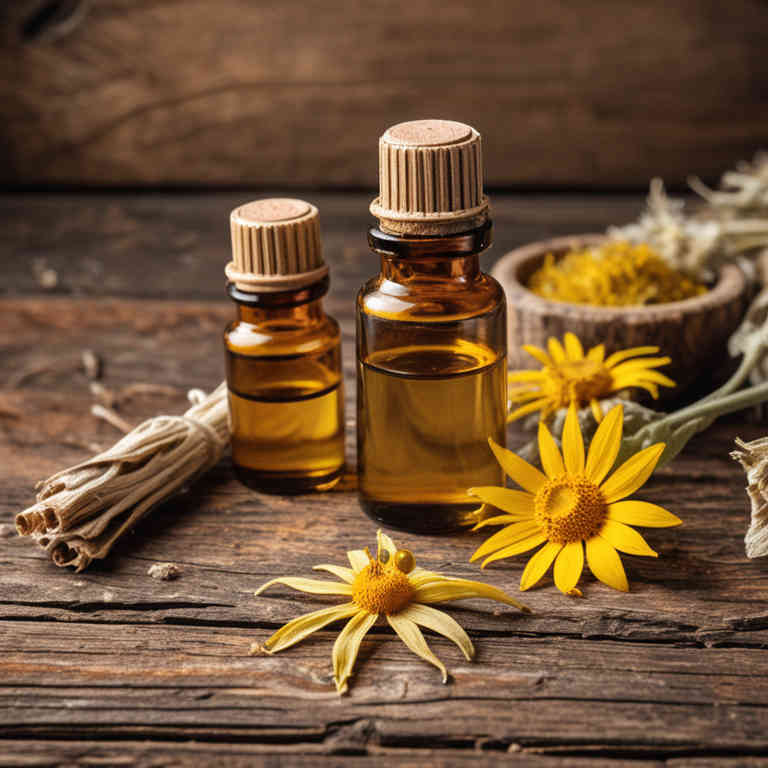Arnica montana essential oil for medicinal use

Arnica montana essential oil is a potent botanical extract derived from the dried flowers of the Arnica montana plant, known for its strong anti-inflammatory and analgesic properties.
It is commonly used in herbalism to treat muscle pain, bruising, and arthritis due to its ability to stimulate blood circulation and reduce swelling. This oil is typically diluted with a carrier oil before topical application to avoid skin irritation. It is also used in aromatherapy to ease stress and promote relaxation.
However, it should never be ingested as it can be toxic when consumed.
Uses
Arnica montana essential oil has been used to treat pain, inflammation, and bruising for centuries, particularly in traditional herbal medicine.
Historically, it was used by European herbalists to alleviate muscle aches and joint pain, often applied topically as a poultice or ointment. In traditional practices, it was also believed to have healing properties for wounds and to reduce swelling. Modern uses include its application in aromatherapy and topical treatments for sports injuries, eczema, and other inflammatory conditions.
However, it is important to note that it should not be ingested and may cause skin irritation in some individuals.
Benefits
Arnica montana essential oil has health benefits such as reducing inflammation, alleviating pain, and promoting skin healing.
It is commonly used topically to treat bruises, sprains, and muscle aches due to its anti-inflammatory and analgesic properties. The oil contains compounds like helenalin and other sesquiterpene lactones that contribute to its therapeutic effects. However, it should not be ingested and must be diluted before applying to the skin to avoid irritation.
It is often used in aromatherapy and topical treatments for its soothing and healing properties.
Constituents
Arnica montana essential oil active constituents include sesquiterpene alcohols, such as helenalin, and other compounds like flavonoids and phenolic acids.
These compounds are known for their anti-inflammatory, analgesic, and antiseptic properties. Helenalin, in particular, is believed to contribute to the oil's ability to reduce swelling and pain. It is commonly used topically to support muscle recovery and alleviate symptoms of bruising or sprains.
However, it should not be ingested and is best diluted before use on the skin.
Preparation
To make Arnica montana essential oil, first gather fresh or dried Arnica montana flowers, ensuring they are organic and free from pesticides.
Next, place the flowers in a clean glass jar and cover them completely with a high-quality carrier oil such as jojoba or almond oil. Allow the mixture to infuse in a cool, dark place for 4 to 6 weeks, shaking the jar gently every few days to promote extraction. After the infusion period, strain the oil through a fine mesh strainer or cheesecloth to remove the plant material.
Finally, store the essential oil in a dark glass bottle in a cool, dry place, away from direct sunlight.
Side Effects
Arnica montana essential oil may lead to skin irritation, redness, or allergic reactions when applied topically.
It is often used for its anti-inflammatory and analgesic properties, particularly in muscle pain and bruising. However, it should never be ingested as it can be toxic when taken internally. Prolonged use may cause dermatitis or sensitivity in some individuals.
Additionally, it may interact with certain medications, so it is important to consult a healthcare professional before use.